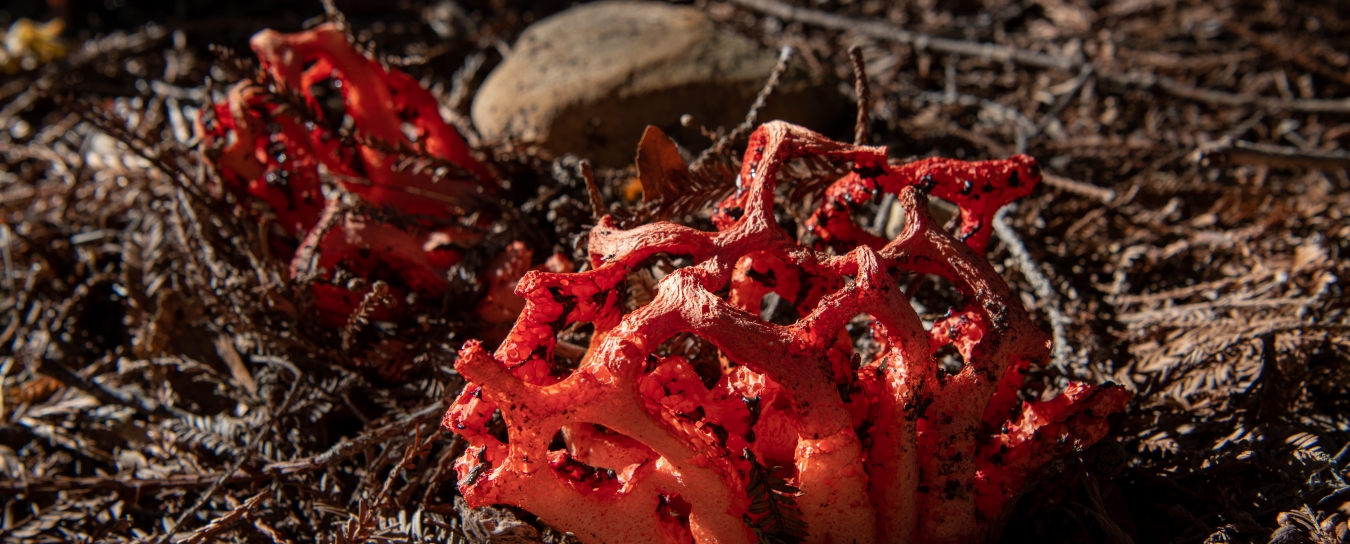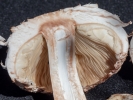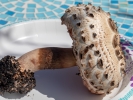
Fungi
Our fungi identifications are courtesy of fungi expert Bob Cummings, who teaches in the Botany Department at Santa Barbara City College in the Biological Sciences. Before you ask, check to see if your fungus has been identified below.
- Anthropology
- Rocks & Fossils
- Invertebrates
- Vertebrates
- Botany
- Astronomy
- Fungi
- General
- Recently Asked
Mushroom ID?
Hi,
We have these beautiful mushrooms growing beneath a bush in our yard. Can you tell me what they are? An ID forum I belong to thinks they're Chlorophyllum rhacodes, a type of Shaggy Parasol. The images I've found online seem to back that up. However, the book I have (California Mushrooms, by Desjardin, Wood, and Stevens) says rhacodes is uncommon here.
Thanks!


Curator Response
Whenever we have a question that requires a fungi expert, we ask Bob Cummings, who teaches in the Botany Department at Santa Barbara City College in the Biological Sciences. Here's what he had to say:
"The photos you sent me were of common Shaggy Parasols, Chlorophyllum brunneum.
C. brunneum is also known in various field guides as Lepiota rachodes, Macrolepiota rachodes, and other synonyms and misapplied names. C. brunneum is a very common species in Central and Southern California. C. brunneum is distinct from Chlorophyllum rachodes, which is considered quite rare in California. C. brunneum is similar and sometimes confused with the toxic green-spored parasol, Clorophyllum molybdites.
The field characteristics that are used to identify C. brunneum are: white gills and white spores at maturity, with brown scales on the cap, bulbous base, growing in garden beds, etc., not usually on lawns, and flesh bruising strongly orange.
In contrast, C. molybdites has green gills and green spores at maturity, usually grows in lawns, and bruises only slightly orange; furthermore C. molybdites occurs usually in the warmer "summer" months, not in the cooler "winter" months in Central and Southern California.
C. brunneum is considered edible, but some people are sensitive to it and suffer gastrointestinal upsets. C. molybdites is always extremely toxic, causing severe gastrointestinal distress. The toxin(s?) is unknown."
Daryl Metzger response:
Thank you!


